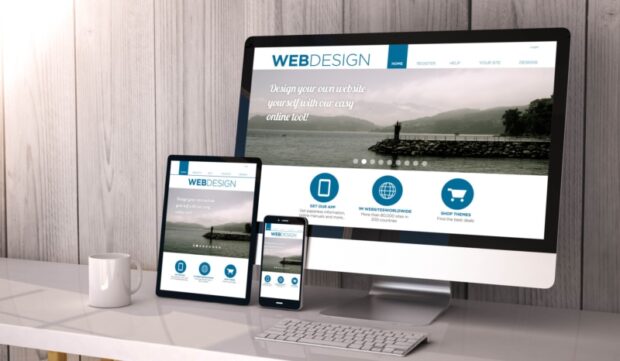Web design is an ever-evolving field, influenced by technological advances, cultural shifts, and user behavior changes. As we dive into 2024, the contrasts between early web design practices and today’s methodologies are stark, reflecting broader trends in technology and society. This post explores how it has transformed from its origins to the present day, highlighting key developments and predicting future trends.
Early Days

In the early 1990s, web design was a novel concept, constrained by limited technological capabilities. Early websites were primarily text-based, designed using simple HTML code that offered few styling options. The focus was on functionality and information delivery, rather than aesthetics or user experience. Web pages featured linear layouts, blue hyperlinks, and default system fonts, embodying a utilitarian approach.
As the internet gained popularity, the mid to late 1990s saw the introduction of CSS (Cascading Style Sheets) and tables for layout purposes, allowing designers more control over the appearance of web pages. This era marked a shift towards more visually appealing sites, with the use of background colors, custom fonts, and table-based layouts that provided structure to content. However, these designs often suffered from slow load times and compatibility issues across different browsers.
Transition to Modern Web Design

In response to the advent of smartphones and tablets in the early 2000s, web design philosophy underwent a significant transformation. Firms like Web Design Hertfordshire recognized the necessity for websites that could adapt to the myriad of device screen sizes and resolutions emerging in the market. Responsive design emerged as a key solution, a strategy whereby websites dynamically adjust their layout and functionality to provide an optimal viewing experience across all devices.
Modern design emphasizes user experience (UX), ensuring that websites are not only visually appealing but also easy to navigate and accessible to all users, including those with disabilities. Accessibility has become a critical consideration, driven by both ethical and legal imperatives. Designers now regularly employ practices such as semantic HTML, ARIA roles, and responsive font sizes to create inclusive and accessible digital environments.
Web Design in 2024

In 2024, artificial intelligence (AI) plays a central role, streamlining the creation process and personalizing user experiences. AI-driven tools can automatically generate design elements based on brand guidelines, optimize layouts based on user behavior, and even create content tailored to individual preferences. This integration of AI not only enhances efficiency but also pushes the boundaries of personalized user engagement.
The current trend leans heavily towards creating immersive and interactive experiences. Technologies such as augmented reality (AR), virtual reality (VR), and voice interaction have been integrated into web platforms, transforming the way users interact with digital content. These technologies provide a more engaging user experience, offering new ways for brands to connect with their audiences.
Conclusion
As web design continues to evolve, it remains deeply intertwined with technological advancements and changing user expectations. The journey from simple, text-heavy pages to dynamic, AI-driven experiences highlights the remarkable pace of change in the field. Looking ahead, it is set to become even more immersive, intuitive, and integral to our digital lives, continually reshaping how we interact with the online world.

